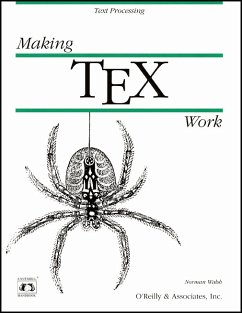TeX is a powerful tool for creating professional quality typeset text and is unsurpassed at typesetting mathematical equations, scientific text, and multiple languages. Many books describe how you use TeX to construct sentences, paragraphs, and chapters. Until now, no book has described all the software that actually lets you build, run, and use TeX to best advantage on your platform. Because creating a TeX document requires the use of many tools, this lack of information is a serious problem for TeX users. TeX is increasing in popularity, and the need for information is becoming more critical. Many technical journals now request that articles be submitted in TeX. TeX is also playing an increasing role in the Standard Generalized Markup Language (SGML) environment. TeX's portability and flexibility -- not to mention the fact that it is free -- are also making it the typesetting tool of choice for interchange between hardware and software platforms and for international exchange. Yet, despite this growing interest in TeX, TeX users everywhere are having to "reinvent the wheel" by wrestling with TeX's many tools and files on their own. Making TeX Work guides you through the maze of tools available in the overall TeX system. Beyond the core TeX program there are myriad drivers, macro packages, previewers, printing programs, online documentation facilities, graphics programs, and more. This book describes them all. It covers: How to assemble the software you need to build and install TeX on all common platforms: UNIX, DOS, Macintosh, and VMS. How to get TeX and its associated tools from public domain and commercial sources (a complete buyer's guide). How to select and use the tools that let you incorporate graphics into your documents and create bibliographies, indices, and other complex document elements. How to install and use fonts to best advantage, including PostScript and TrueType fonts and LaTeX's New Font Selection Scheme (NFSS).

